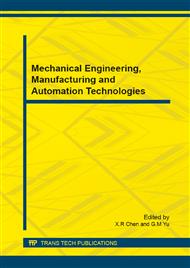p.217
p.222
p.226
p.231
p.235
p.239
p.243
p.247
p.254
Electric Effects on the Pre-Mixing Process in DBD Assisted Combustions
Abstract:
A method of pre-mixing process augmentation for fuel combustion using dielectric barrier discharges (DBD) is presented. The mixing process of fuel and air can be augmented by the edge electric field of the electrodes because its transverse component will exert an electric force on the charge particles generated by DBD. The experimental results show that the combustion can be drastically influenced by this augmentation of pre-mixing process. A hollow flame caused by non-sufficient mixing, in which the air flow velocity is much larger than that of fuel gas, is used to demonstrate this kind of augmentation effects. Once the discharge is ignited, the hollow region in flame will gradually disappear. And further, the flame can propagate backward into the quartz tube. In this paper, the dependences of this kind of augmentation on the applied voltage magnitude and on the distance d from the electrodes to mixing region are examined. The critical voltages for hollow elimination and onset of backward propagation of flame are measured. The augmentation effects will vanish once the value of d exceeds 2cm, the hollow flame can not be changed even the applied voltage is very high.
Info:
Periodical:
Pages:
235-238
Citation:
Online since:
December 2014
Authors:
Price:
Сopyright:
© 2015 Trans Tech Publications Ltd. All Rights Reserved
Share:
Citation:


